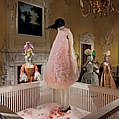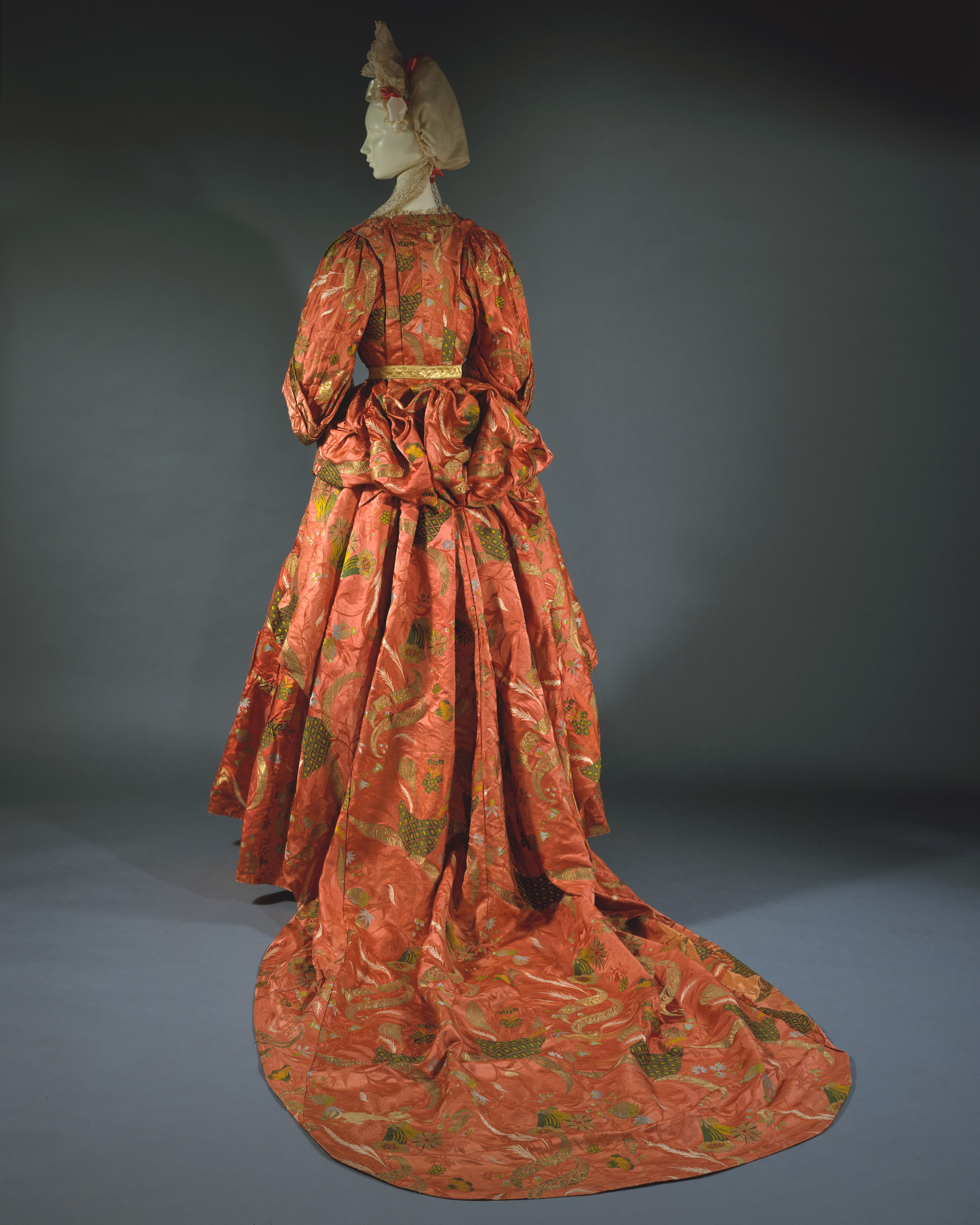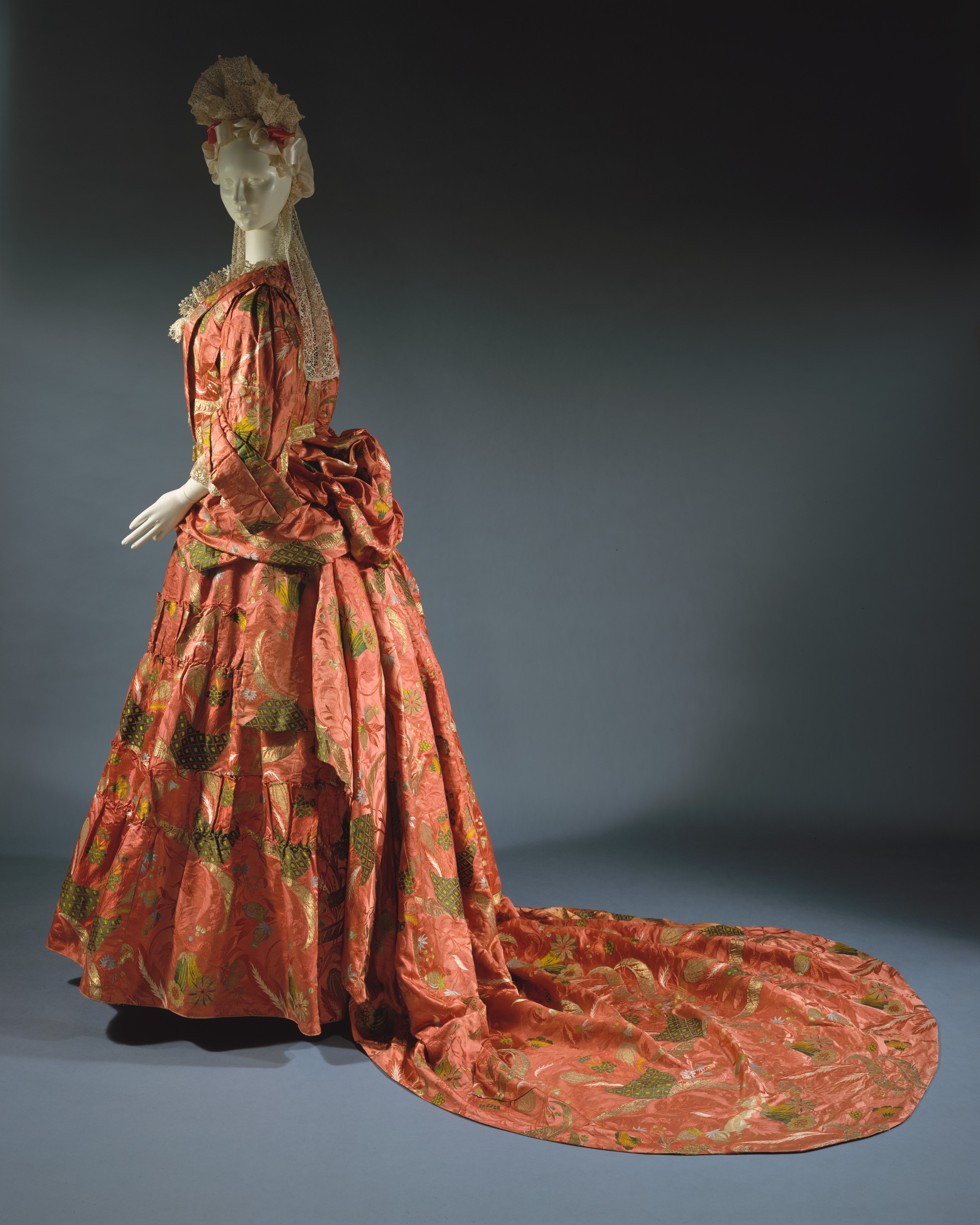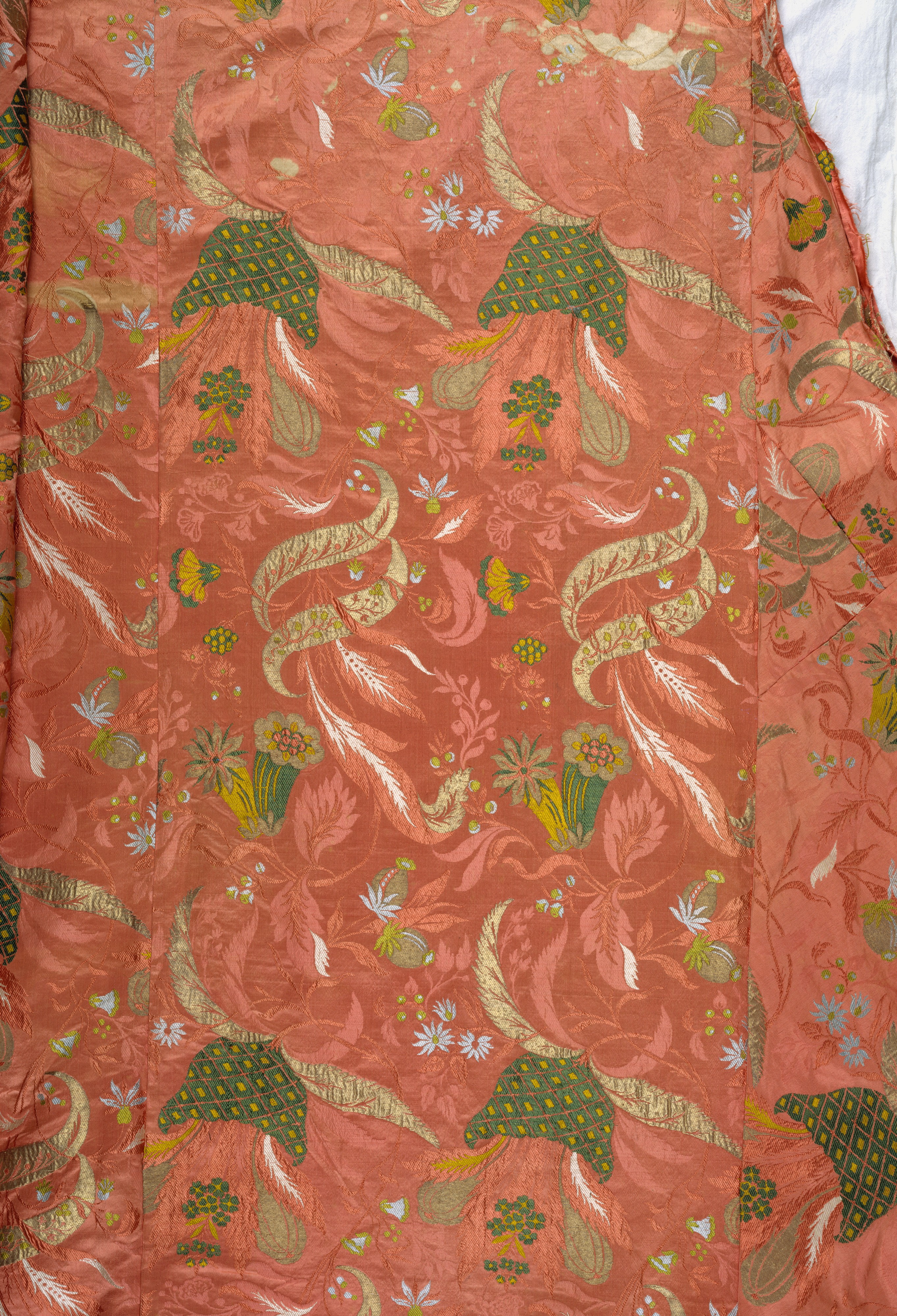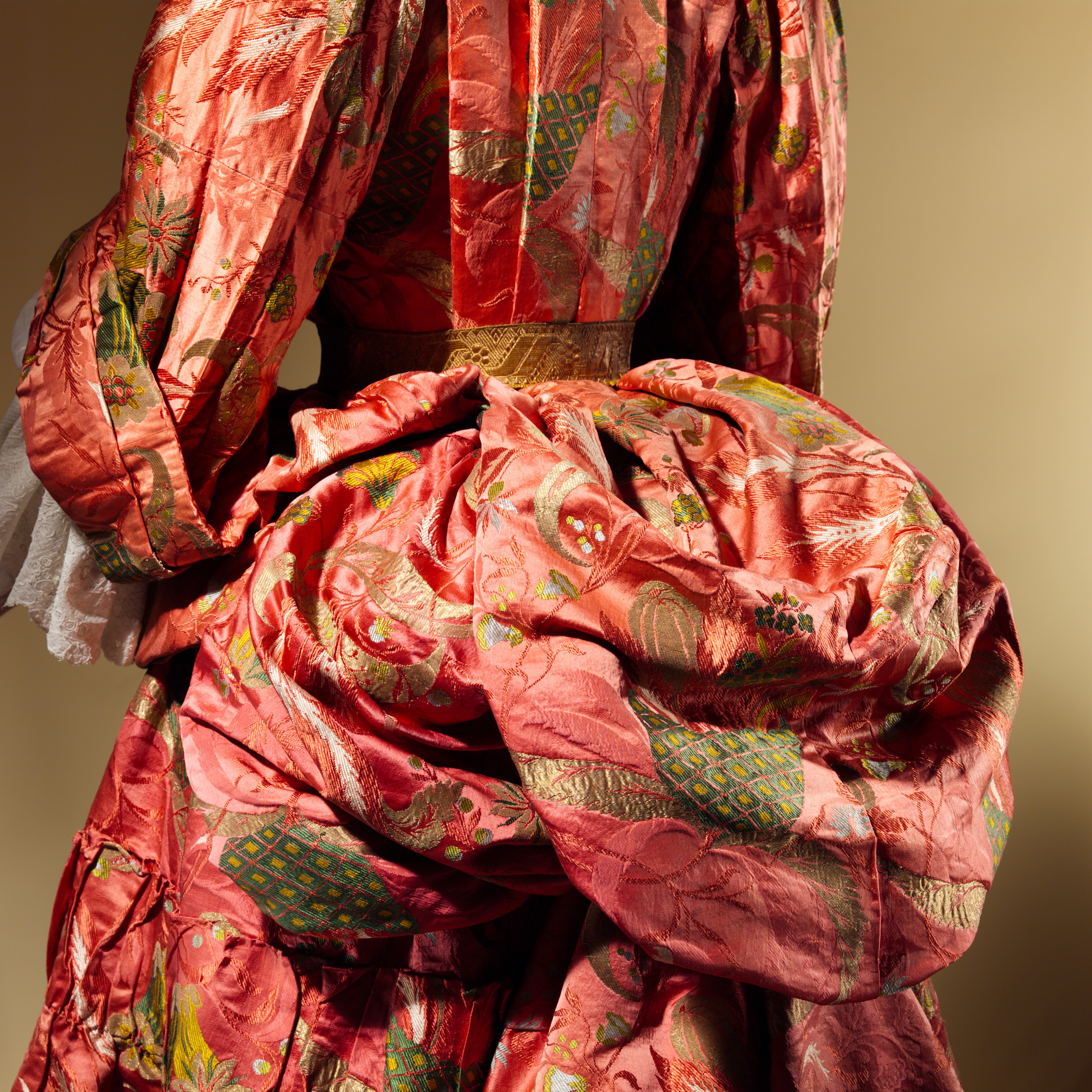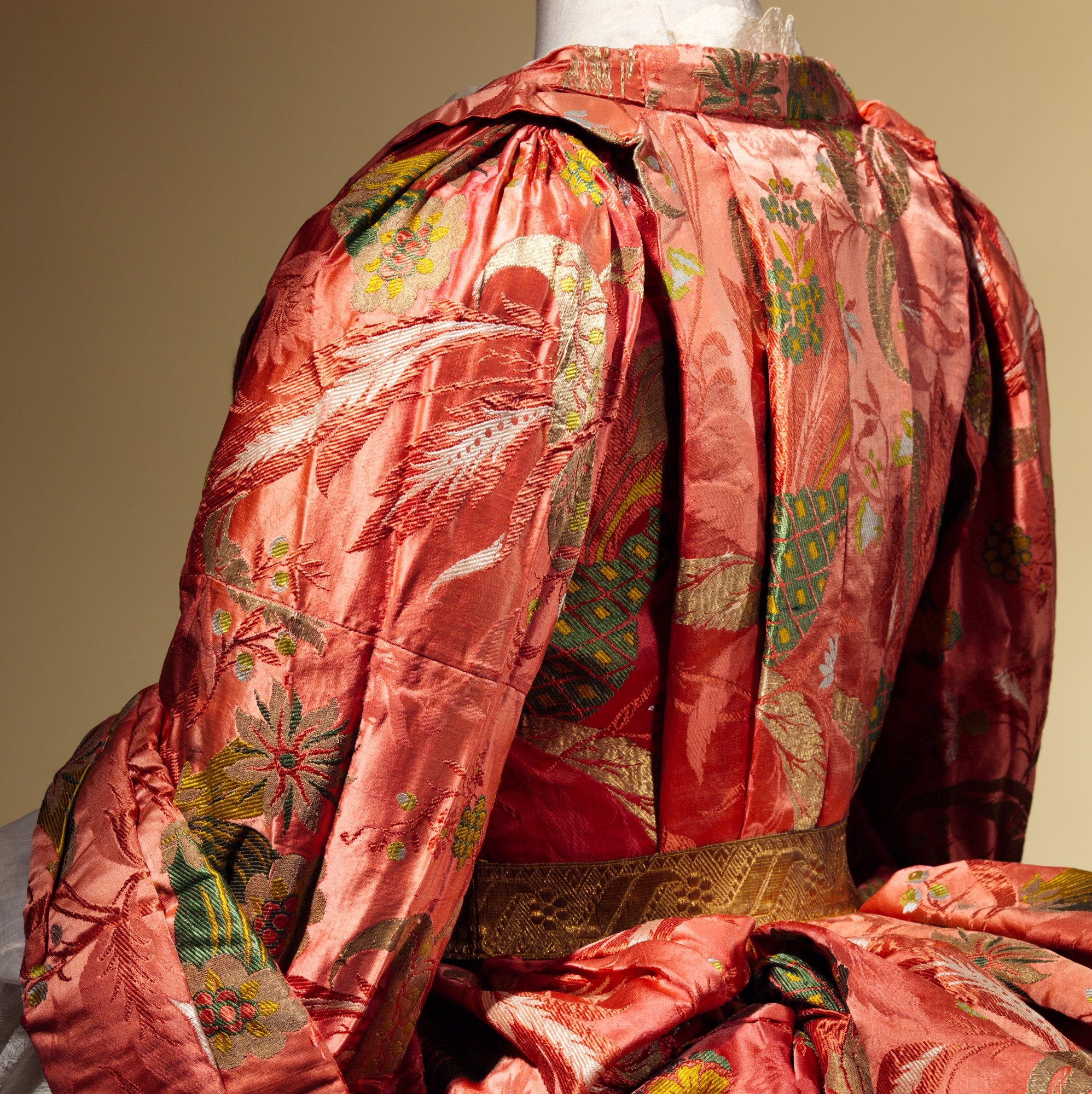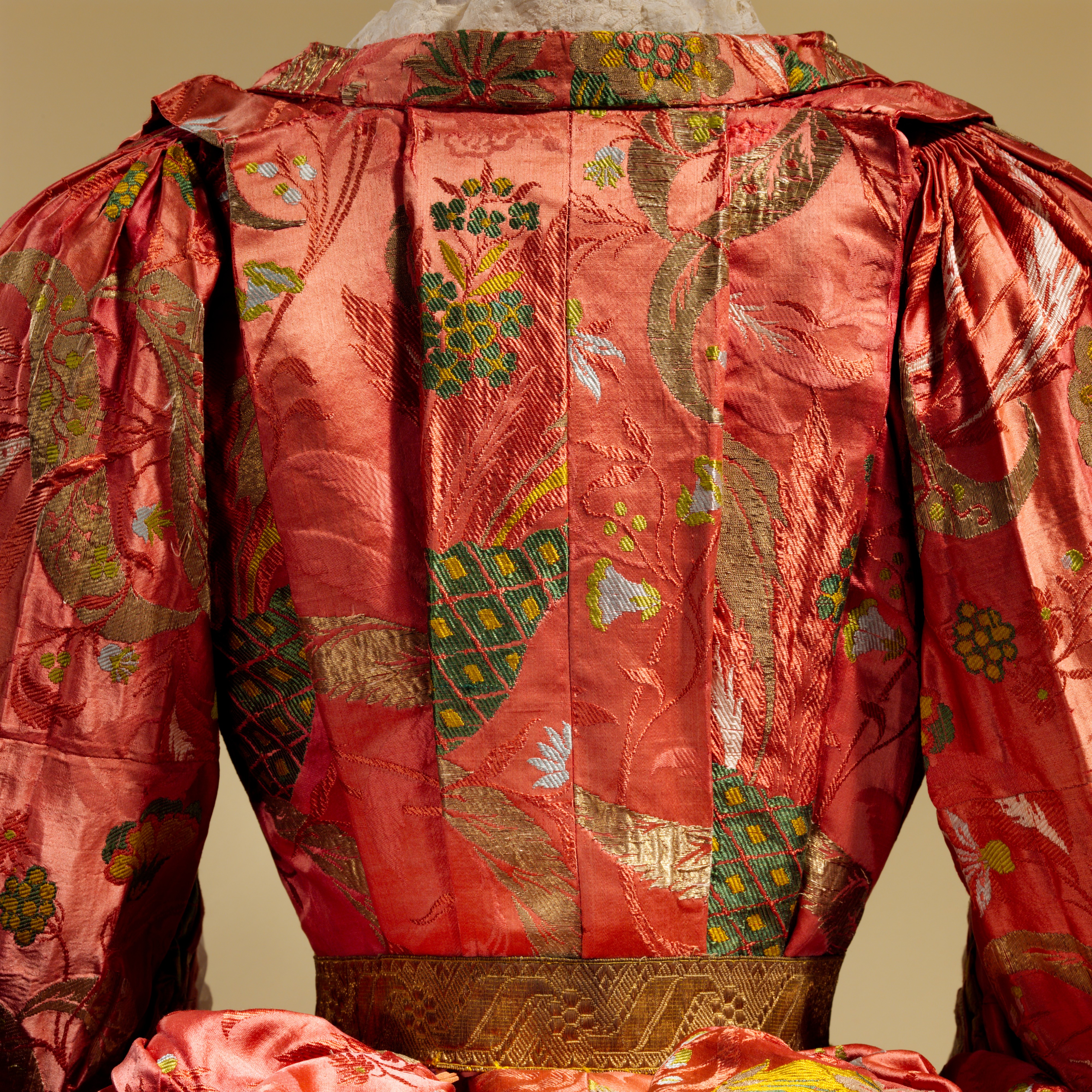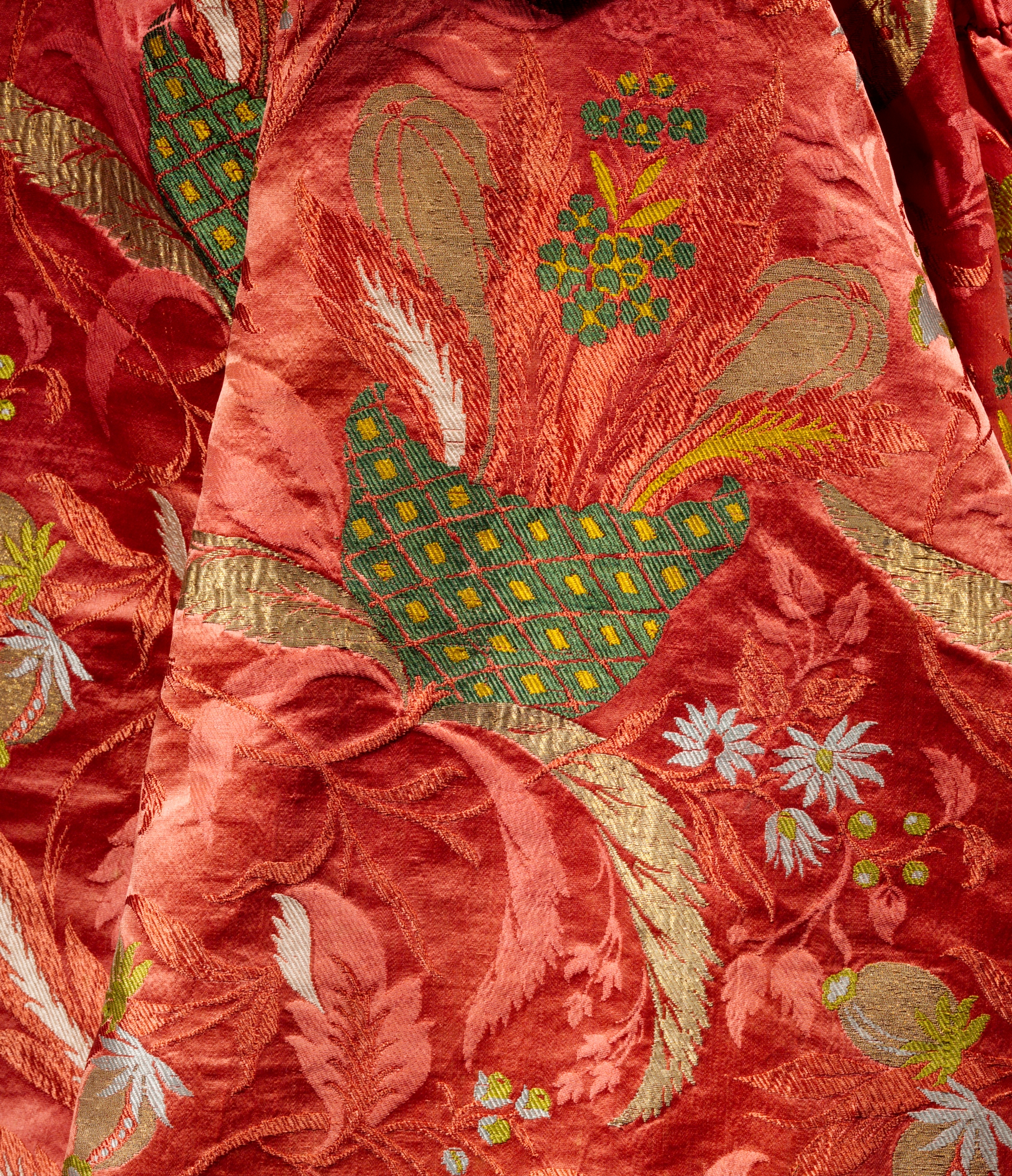Mantua
Not on view
The late 1670s saw a new development in the style of women's dress that would have a far-reaching effect throughout the following century. The stiff constricting boned bodice-and-skirt style previously worn by women was now replaced with the mantua, a more loosely draped style of gown. The mantua was thought to display silk designs to their best advantage, as they were draped rather than cut; as such, it is believed the garment was named after Mantua in Italy, where expensive silks were produced. However, it has also been suggested that the name derives from manteau, the French term for a coat.
The mantua was a coatlike construction, with sleeves cut in one piece with the back and front. It was pleated at the shoulders and fell to the waist, where it was held in place by a sash. From there it was folded back into a bustle shape and worn over a matching petticoat. As the style evolved, the pleats at the front were reduced in number and the bodice was opened, with the torso now covered by a stiffened piece of fabric in the form of an inverted triangle, tapering into a narrow waist. This piece of fabric was known as a stomacher. Early examples are often intricately embroidered. While these gowns appear quite substantial, they were actually precariously fastened with pins to hold the stomacher in place.
Originally an informal style, and banned for its informality from the French court by Louis XIV, the mantua gradually became acceptable as formal dress and remained a popular choice for court dress in England until the mid-century. Its popularity was such that dressmakers were referred to as mantua-makers.
Due to rights restrictions, this image cannot be enlarged, viewed at full screen, or downloaded.
This artwork is meant to be viewed from right to left. Scroll left to view more.



